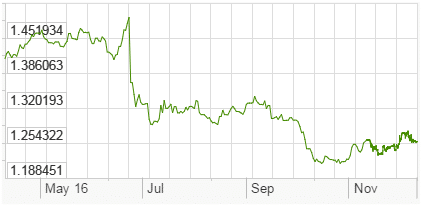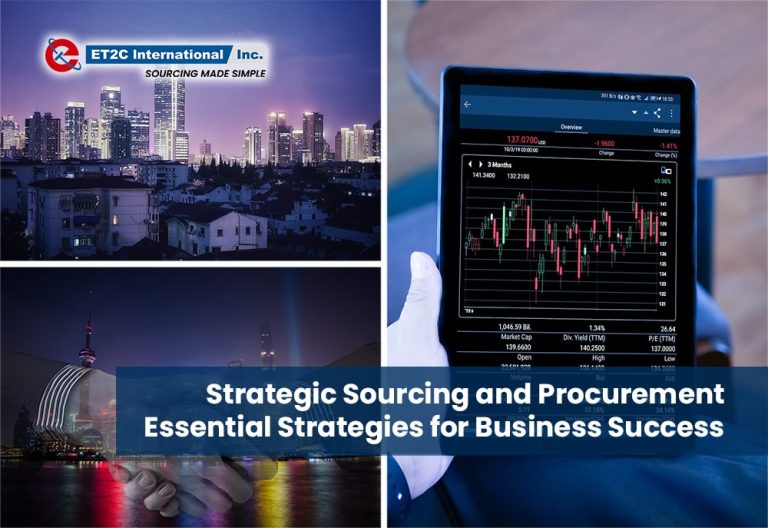In the last few years, the world has been gripped by populist anti-establishment movements demanding change, conservatism and isolation. The extent to which these elections and referendums have played out over social media has not been seen before. Trump’s indelible tweets at 4:00am in the morning and Zuckerberg’s commitment to creating an algorithm to identify fake news being promulgated unfettered on Facebook (e.g. the Pope supports Donald Trump) are evidence of this.
As the dust settles in the United Kingdom and the United States, it is imperative that we take stock and look through the populist rhetoric and unrealistic claims to try and understand how the trading environment will play out based upon objective truths. This is not an easy exercise given the many uncertainties but a useful one nonetheless.
The Art of the Deal
On Tuesday November 8th 2016, the United States elected Donald Trump to become the 45th President. Although the result was a surprise to the majority (Clinton still won the popular vote), in hindsight, it’s more surprising that no one saw the result coming despite the polls pointing to a win for the Clinton machine. The truth is that the world is not as secure or optimistic as it has been in the past. Since the Great Recession, we have seen an increasing frustration at the political establishment fueled by flames of austerity, stagnant growth and terrorism (which in turn has soured the populist perspective on immigration). As a result, nations are withdrawing to the confines of their national borders and away from globalization in return for security and protectionism.
Hardly a promising start to a Presidency for those with vested interests in global trade and, in particular, Asia. Although this article discusses the increased protectionism with relation to Trump, there is a reassuring sense of déjà vu; we referenced the same subject matter when Obama was elected back in 2010 and the fears of protectionism back then in our Newsletter, “The Politics of the Yuan”.
Trump himself recognized in an interview on “60 Minutes” that one has to say certain things to motivate people to vote. That might explain a lot of the political rhetoric on both sides gearing up to the election because not much of the statements were founded in the truth. However, in relation to trade, there are a number of fundamental truths that cannot be ignored:
- Free Trade is “good” for the US economy. It is basic macroeconomics (e.g. Ricardo’s Theory of Trade) that imposing import tariffs to protect domestic production has a negative impact upon GDP and the country as a whole. Although scholars now believe that Smoot and Hawley’s import tariffs of June 1930, “added poison to the emptying well of global trade,” rather than being the sole cause, the Act certainly did not help America’s clumsy spiral into the Great Depression. Just as a business, which is not competitive in manufacturing a specific product, should not make the product, the same is true of countries. Where the USA is not competitive, the country should not be trying to compete and, instead, should specialize in other categories in which they are competitive and more innovative. If one can purchase goods elsewhere for less, then everyone benefits from it. Trade is a positive-sum game and not a zero-sum game as is sometimes touted.
- Free Trade results in higher standard of living. As an extension to the above, free trade enables consumers to benefit from higher quality product at less expensive prices. If a broad range of import tariffs are imposed, those that are likely to be most affected are the working class due to, amongst other things, the Walmart effect (see The Politics of the Yuan).
- Globalised Manufacturing is interrelated. Any increase on Import Tariffs would actually reduce the competitiveness of manufacturers that import components as part of a product and, therefore, potentially reduce the number of jobs.
- The United States is the 2nd Largest Exporter in the World. Although this subject garners minimal coverage during a political election, the USA does export a significant amount of product and services. Given Trump’s insistence on tearing up NAFTA and TPP (which I believe China would thank him for because it also encourages more competition within Asia), it might come as a surprise that America’s top Import Partners in 2015 were by dollar value:
- Canada: US$280 billion (18.6% of total American exports);
- Mexico: $236.4 billion (15.7%);
- China: $116.2 billion (7.7%); and
- Japan: $62.5 billion (4.2%).
In fact, “the world’s second-largest exporter, the United States shipped US$1.505 trillion worth of products around the globe in 2015. That figure represents roughly 8.1% of overall global exports estimated at $18.686 trillion based on 2014 statistics.”[2] The reason that this is significant (and we are not saying that there is no merit to renegotiating trade deals) is because it reinforces the argument that starting a trade war by tearing up existing trade agreements with the members of NAFTA or TPP would not be in the best interests of the United States.
Although no one (maybe not even Trump himself) knows what the next administration’s trade policies are going to look like, Trump’s cabinet picks might suggest that he is going to take a hardline stance. But, as the Economist argues (“Donald Trumps Trade Bluster” – 10th December 2016), the reality is that it would not be easy to introduce import tariffs across the board without harming exports of American products dramatically. The Economist asks whether the rhetoric and the cabinet picks and the alarmist rhetoric are more reflective of Trump’s self-proclaimed negotiating styles, “I aim very high, and then I just keep pushing and pushing and pushing to get what I’m after.” The world will be eagerly watching Trumps actions to try and anticipate how his trade policies will take effect and whether there is any substance to his threats.
For example, Trump recently intervened in Carrier’s decision to move a small percentage of their production to Mexico in order to save 800 jobs in return for tax incentives. The media has naturally tried to understand the drivers behind his decision. At the very least, his intervention not only sets a dangerous precedent of picking winners and losers rather than setting a commercial and impartial framework in which all companies compete; but one might also infer that the President-Elect is indeed more interested in how he is perceived by his supporters rather than the outcome of longer term policies.
- Immigration is not necessarily bad. The formula for the total output of an economy is a function of three core elements: (i) Capital Stock; (ii) Population; and (iii) Productivity. The third limb, Productivity, supports the need for the United States to become more productive through the use of innovative technologies rather than protect industries in which the United States cannot compete. Population is also key and with a population growth rate of 0.72% (2013), the United States needs all the help it can get. A strong argument can be made for a vibrant and cosmopolitan economy with legal immigration an important component of that.
Brexit
A lot of people (including the enigmatic Nigel Farage) pointed to Brexit as an indicator that Trump would be elected and with the United Kingdom still suffering from a post-referendum procrastination, it’s interesting to look at the United Kingdom’s position relative to that of the United States. There are some similarities underlying the vote to leave the European Union but the overwhelming position on trade is dramatically different.
Immigration is a common theme behind the votes in both countries. A large proportion of the United Kingdom believe that immigration (and the lack of control over immigration) was resulting in jobs being taken and security threatened. The United Kingdom’s decision was also driven by a desire to take back sovereignty and control of its own destiny rather than being tied to a European Parliament that has become bloated, inefficient and ineffectual. Although not a direct comparison, one might argue that this is “similar” to the populist movement to take back control of the United States from the “establishment” and to “make America great again.”
However, there is a stark difference when it comes to trade. Whilst constitutional lawyers battle to understand how Article 50 works, in contrast to the populist movement in the United States, there is unanimous agreement about the importance of Free Trade in the United Kingdom. The biggest question is how the country is going to separate itself from the largest economy in the world (the European Union) as well as the biggest exporter and importer and, critically, maintain access to the free market. In 2015, the United Kingdom exported 44% (223.3 billion) and imported 53% (291.1 billion) of its Goods and Services to and from the EU. The debate revolves around the trade-off between the perceived negative association with the free movement of people and the benefit of free trade.

The main issue at the moment with regards to the United Kingdom’s decision is the uncertainty of how Brexit will play out and over what time frame. It is no surprise given the conflicting, confusing and maybe even misleading statements of intent from the government before and after the referendum that the Pound has dropped dramatically against the Dollar (to which a lot of the Asian currencies are pegged).
Figure: x-rates.com (10th April – 11th December 2016)
As a short-term shock (17.6% drop from peak of 1.479 on 23rd June to 1.219 on 28th October) for those who have not purchased forwards, imports into the United Kingdom have become expensive and are, therefore putting pressure on margins. The converse is that exports have become less expensive and are likely to boost international sales. However, the latter might be a false dawn. As mentioned above in relation to the United States, an increase in the cost of imported components, might actually result in a compression of margin despite increased foreign sales.
In the longer term, trade agreements with the European Union and other trade partners will be critical to growth of GDP in the United Kingdom. Whether the populist movement is willing to accept it or not, immigration is an important component of a healthy labour market. Ultimately, as a result of the overwhelming requirement to have access to the free market, the United Kingdom will likely have no choice but to follow the Norwegian model and pay for access to the free market with some concessions to immigration. In that sense, as “most other mainland European nations have learned, the hard way, is that splendid isolation is usually an illusion.”
Until the United Kingdom has left European Union (assuming it will), there will be exposure to companies that import components or products from Europe because there is no certainty whether a trade agreement or access to the free market will be achieved. In addition, margins will also be compressed by the weakness of the Pound Sterling against the Dollar, which will, in the short to medium term, impact prices from Asia. That said – Asia still remains the most cost effective place to manufacture product. Companies in the United Kingdom should further engage with their supplier base to understand how to become more streamlined and efficient. There might also be an opportunity to source components or products in Asia that are currently being manufactured in Europe due to the risk of import duties.
Innovation and the Product Life Cycle
The global macro-economic and political landscape is changing, and with that there is a need for more creative solutions to deliver value in a more complex marketplace. In 2017, ET2C is committed to investing in our clients’ Product Life Cycles and engage with our customers on a number of different levels; beyond simply the sourcing and manufacturing arena. We recognize that there is still an innovation gap between the Western World and Asia and we are determined to fill this in order to help our clients. We are currently looking at a number of opportunities and will let you know once we have the initiatives established. That said, if you have any creative ideas that would help you, please do let us know.







